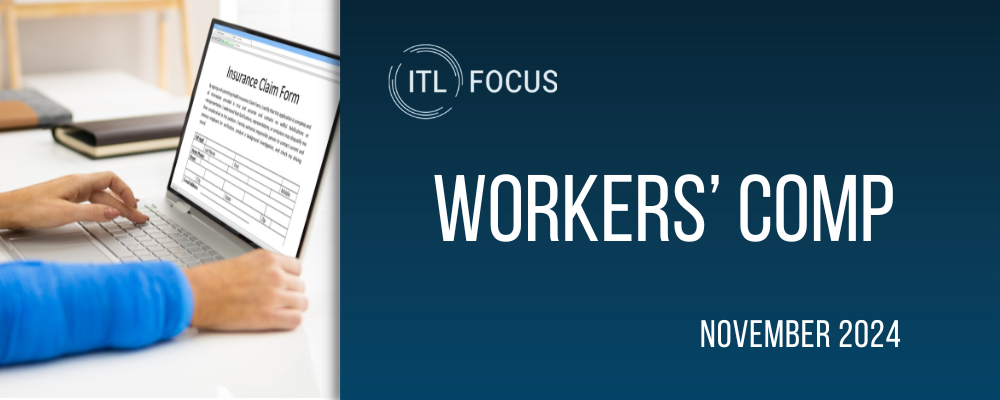There are hundreds of national and regional firms, including insurance companies, that compete to provide workers' compensation claims administration services for private as well as governmental self-insured entities. In California, there are nearly 500 private (non-public entity) organizations that are self-insureds, although only 35 of them actually self-administer their claims. Self-administered entities are generally very large organizations with open claims often exceeding $100 million in estimated future liabilities (EFL). The remaining self-insureds, including many of the largest self-insureds, rely upon a state licensed Third Party Administrator (TPA) to provide these services. In California, 98 Third Party Administrators are currently licensed to provide these services, although some of these are dedicated units that serve a single self-insured client.
Third Party Administrators provide much more than simply administration of workers' compensation claims. Their services and products include such things as: claims investigations, subrogation, loss control and safety programs, workers' comp training, risk management information systems (RMIS), management analytical summary reports, and expert witness testimony. In addition, many of the larger Third Party Administrators can provide a wide variety of clinical programs and networks such as bill review/utilization review (UR), nurse case management, pharmacy benefit management, Medicare Set-Aside services, surveillance services, subrogation, scanning services, etc. Make sure you designate which fees or costs should be an allocated loss expense payable to outside parties — not the Third Party Administrator. Accordingly, you should carefully weigh the advantages and disadvantages of using the Third Party Administrator's in-house vendor networks or other stand-alone organizations as you develop your claims management program. The Third Party Administrator relationship should be woven into your entity's claims management program procedures manual.
In choosing a Third Party Administrator to administer your self-insured claims, the location of the Third Party Administrator's office is often one of the key factors in your selection process. If your firm is concentrated in one locale, then a local or regional Third Party Administrator firm that is familiar with the local workers' comp jurisdictions, hospitals, physicians, attorneys, etc. could be very valuable. In addition, the Third Party Administrator assigned team of examiners and supervisors should be able to visit your facilities and meet with you to familiarize them with your workplace and provide on-site accident investigations, supervisorial training, and return-to-work assistance. Third Party Administrator familiarity with your business and/or manufacturing activities is a key factor in cost-effective claims management. On the other hand, if your firm has facilities spread out throughout a state or region, then a national or regional Third Party Administrator may provide the most-cost effective program to administer your claims.
Another key factor you need to make clear in choosing a Third Party Administrator relates to the proposed adjuster caseloads. Although there are numerous benchmarks as to what an examiner's ideal caseload of active indemnity and or medical-only claims should be, you need to be confident that the assigned claims management team is not overburdened with too many cases to handle. This factor includes the Third Party Administrator supervisors and support personnel as well. It's important to judge each competing Third Party Administrator on the basis of your expectation of examiner caseloads as well as their knowledge, experience, and skills in adjudicating claims.
Does the Third Party Administrator have minimal turnover of personnel? Who are their other regional clients? The California Self-Insurers' Security Fund (SISF), for example, has mature, complex indemnity-only cases going back to World War II. Therefore, our Third Party Administrator contracts spell out a maximum of 110 active cases assigned to each examiner. Your entity caseload benchmarks may differ depending upon the nature and mix of assigned claims (i.e. medical only, indemnity, inactive) as well as frequency and severity.
In evaluating a Third Party Administrator's performance, one red flag may be a high percentage of cases assigned by the examiner to defense attorneys. Applicant legal representation doesn't always necessitate the assignment of a defense attorney. Expert examiners can often manage a case without a defense attorney. Instead, it may make more economic sense to use Hearing Representatives, as an example. Within the past year, I have witnessed self-insureds with litigation rates as low as 3% and others with litigation rates as high as 88%.
There are many varieties of Third Party Administrator claims contract pricing models, including “cradle-to-grave,” but one of my favorites is the approach the California Self-Insurers' Security Fund utilizes. It's a cost-plus staffing model, wherein we pay our Third Party Administrators each month based upon an annual contract fee. With over 3,000 current Self-Insurers' Security Fund worker compensation claims, our Third Party Administrators are required to provide dedicated staff. The dedicated staff at each Third Party Administrator includes a Claims Supervisor (with a minimum of 10 years claims experience) who manages up to 5 Claims Examiners (with a minimum of 5 years claims experience). In addition, we specify that there be at least one Claims Assistant assigned to support up to 5 Claims Examiners. In addition, there is an assigned Unit Supervisor at each Third Party Administrator.
During the year as claims close, these assignment ratios may fall below the minimum number. If so, the Third Party Administrator is allowed to adjust designated (less than 100% Full Time Equivalent) employees in increments as small as a .25 Full Time Equivalent (FTE). The Third Party Administrators submit monthly Organization Charts to the Self-Insurers' Security Fund that identify each Claims Examiner's active/inactive caseload as well as the assigned Security Fund estate(s). You may desire to have the Third Party Administrator assign your Third Party Administrator Claim Examiners based upon the physical location or operational divisions where your workers' compensation claims occur.
To arrive at a fair Third Party Administrator contract pricing scheme, each year we "test" the expected regional salaries of the various workers compensation positions assigned to our account. There are a number of good benchmarks available. For each Third Party Administrator designated position (including management personnel), we factor the named position's annual salary including: employee benefits, office overhead, and a reasonable profit factor. That calculation leads to a specific total annual dollar amount for each Third Party Administrator position. Adding these up, including any partial Full Time Equivalent assignments, the Third Party Administrator contracts are adjusted in a uniform manner each year. The annual fee is paid in monthly increments.
As claim settlements take place during the year, the Third Party Administrator may be able to re-assign some of the designated staff as long as the Self-Insurers' Security Fund caseload ratios do not exceed our contract terms. This provides an incentive for the Third Party Administrators to settle claims, since the staffing model pricing remains in place for one year. The Self-Insurers' Security Fund's previous Third Party Administrator contracts were adjusted monthly based upon the number of open claims. This approach made budgeting difficult and served as a disincentive for the Third Party Administrator to close claims.
While there is no perfect or agreed-upon Third Party Administrator pricing model, I like the cost-plus staffing model as it serves to emulate an internal, self-administered program. Third Party Administrator employees are each identified by name and clearly understand that the client they serve is you. I've experienced many dedicated Claims Examiners over the years who have worked as hard as our entity's own employees in trying to achieve excellent cost-effective settlements. The Third Party Administrator examiners and client support team should feel like they are an integral part of your corporate team.
Other Third Party Administrator issues include the prompt reimbursement of any fines or forfeitures that occur due to the Third Party Administrator's error or oversight. In addition, the Third Party Administrator should also be required to disclose and all business relationships with vendors that are paid through the claim files with your monies. I also recommend requiring the annual submittal of the Third Party Administrator's Statement on Auditing Standards 70 (now Statement on Standards for Attestation Engagements 16) reports as well as the documented certification and on-going training of assigned Third Party Administrator personnel. For example, each of the assigned Third Party Administrator Claims Examiners in California should have at least 30 hours of training every 2 years to meet or exceed the Post Designation Training Requirements of the Department of Insurance as well as 9 hours or more of Division of Workers Compensation training each year.
For indemnification purposes, make sure the Third Party Administrator is required to maintain General and Auto Liability, Workers' Comp, and Blanket Fidelity, as well as Professional Liability/ Errors and Omissions coverage. Finally, in the event you terminate the Third Party Administrator's services, ensure that your Third Party Administrator contract spells out the termination without cause after a designated minimum notice. In addition, note in writing that your organization owns the claim files and that they can be accessed at any time. Hard copy claim file documents must be returned to you in a reasonable period of time in the event of contract termination. Periodically, it is valuable to have an independent claims audit conducted of your Third Party Administrator. It should provide you with assurance that it adheres to best practices. In addition, I believe that such claim audits should be used as a tool to improve your program by suggesting positive changes and improvements for both the Third Party Administrator and client whenever possible.
Importantly, don't let a low-bid mentality in evaluating Third Party Administrators hamper your opportunity to maintain an effective claims management program. You get what you pay for, and claim administration costs are still a relatively small component of ever-increasing workers compensation claim costs. A good, trustworthy Third Party Administrator that maintains a professional staff can save you a large portion of their fees and bring about significant savings in your workers' compensation claims management program.





